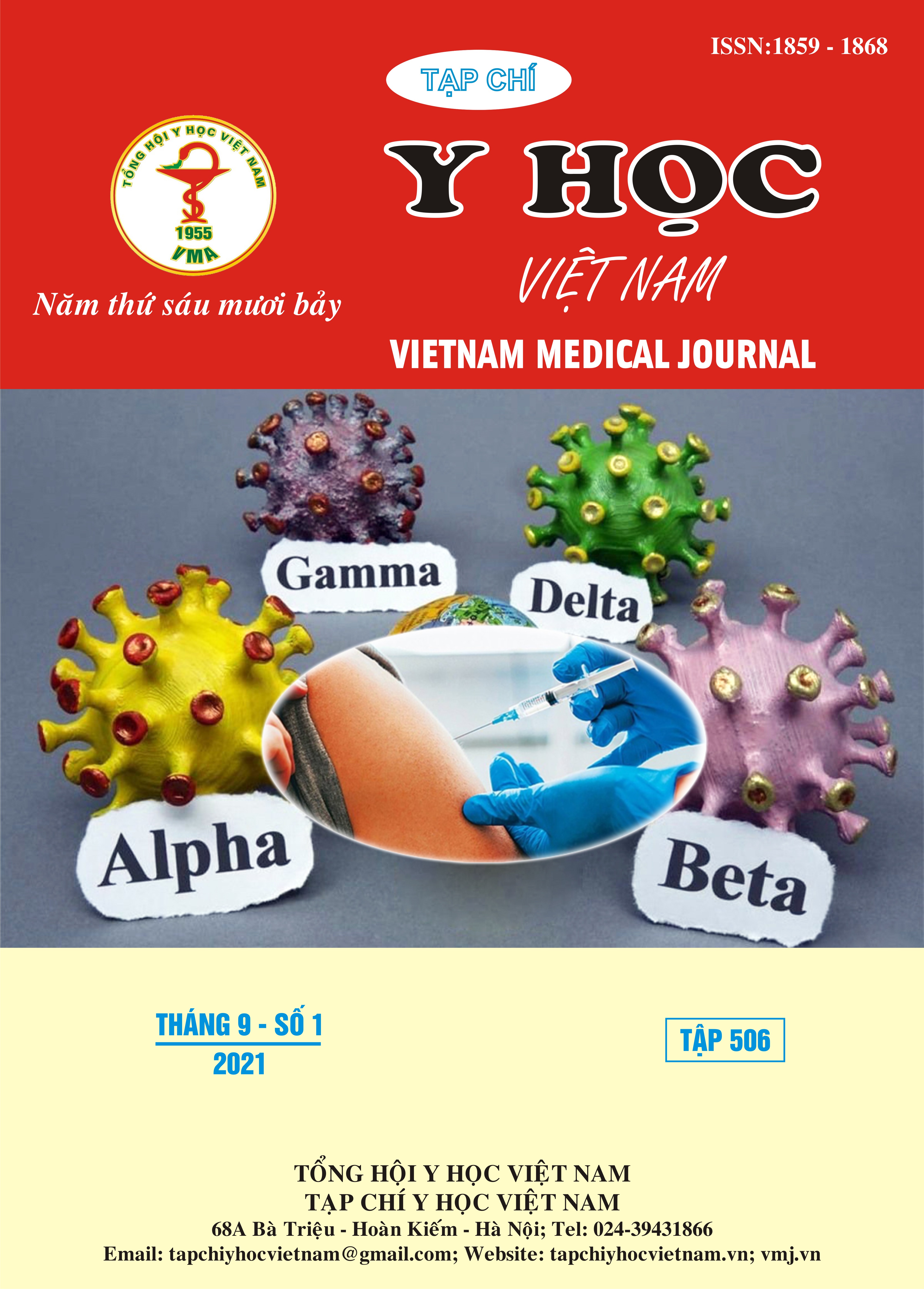THE EFFICACY OF VITAMIN D SUPPLEMENTATION FOR CHILDREN UNDER 5 TO IMPROVE THE INCIDENCE OF ACUTE RESPIRATORY INFECTION IN AN LAO, HAI PHONG IN 2017
Main Article Content
Abstract
Objective. The study was carried out to evaluate the efficacy of 500 IU vitamin D supplementation daily for children under 5 to improve the the incidence of acute respiratory infection in An Lao, Hai Phong in 2017 during one year. Subjects and Methods. Subjects included 164 under 5 children divided into 2 groups: intervention and control group. Method was a community intervention controlled trial, compared before and after the entervention. Results and conclusions. After the intervention, mean vitamin D of intervention group increased 5.54 ng/ml higher than that of control group 1.38 ng/ml, mean vitamin D difference between group was 4.16 ng/ml. Vitamin D supplementation reduced 37.4% in the intervention group and 14.7% in the control group, and incidence difference between 2 groups was 22,7%.
Article Details
Keywords
Intervention study, efficacy, vitmain D, acute respiration infection
References
2. Trần Quỵ (2013), “Nhiễm khuẩn hô hấp cấp tính”, Bài giảng nhi khoa tập 1 – Nhà xuất bản y học Hà Nội, trang 380-389.
3. Adebola E. Orimadegun et al (2020), “A systematic review and meta-analysis of sex defferences in morbidity and mortality of acute lower respiratory tract infections among african children”, J Pediatr Rev, 8(2):65-78. doi:10.32598/jpr.8.2.65.
4. David A McAllister et al (2019), “Global, regional, and national estimates of pneumonia morbidity and mortality in children younger than 5 years between 2000 and 2015: a systematic analysis”, Lancet Glob Health, 7(1):e47-e57.doi:10.1016/S2214-109X(18)304408-X.
5. Giuseppe Saggesse et al (2018), “Vitamin D in pediatric age: consensus of the Italian Pediatric Society and the Italian Society of Preventive and social Pediatric, jointly with the Italian Federation of Pediatricians”, Ital K Padiatr, 44:51. doi:10.1186/s13052-018-0488-7.
6. Giustina A và CS (2020), “Consensus statement from 2nd International conference on controversies in vitamin D”, Rev Endocr Metab Disord, 21(1):89-116. doi:10.1007/s11154-019=09532-w.
7. Heike A Bischoff - Ferrari et al (2006), "Estimation of optimal serum concentrations of 25 - hydroxyvitamin D for multiple health outcomes", Am J Clin Nutr. 84 (1): 18 - 28.
8. Holick F Michael (2007), “The vitamin D deficiency pandemic: Approach for diagnosis, treatment and prevention”, Rev Endocr Metab Disord, 18(2):153-165. doi: 10.1007/s11154-017-9424-1.
9. Holick MF and Tai C Chen (2008), "Vitamin D deficiency: a worldwide problem with health consequences", Am J Clin Nutr. 87 (4): 1080S - 1086S.


